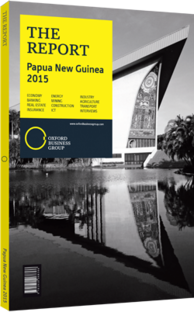Satellites deliver ICT service, overcoming PNG's challenging terrain
Although Papua New Guinea’s mountainous topography and existing digital infrastructure gap have been a major impediment to the expansion of internet coverage, satellite and microwave technology are creating promising opportunities for service providers. The government has already moved to create a microwave link for its planned National Broadband Network (NBN). At the same time, satellite broadband services represent perhaps the most high-potential channel for future rural service and capacity expansions in PNG, with several new deals signed in recent months.
Digital Deficit
Internet penetration is low in PNG, and World Bank data shows that just 6.5% of the population used the internet in 2013, while the International Telecommunication Union (ITU) reports that in the same year just 5.5% of the population had a fixed internet connection. In 2013, 34 secondary schools out of a total of 2017 had internet access, as did just four out of 3332 primary schools, according to the National Information and Communications Authority.
Limited infrastructure has driven prices up, with a 20-GB monthly broadband plan in Port Moresby costing up to $3000 per month, with even the most basic plans costing in the region of $200 per month, according to January 2014 prices (see analysis).
Government Strategy
The government is moving to address these challenges with its National Broadband Policy (NBP), which aims to expand broadband availability to 90% of the population by 2018 via the NBN, which will be deployed by state-owned operator Telikom PNG. Telikom and China’s Huawei signed a deal for network deployment in 2013, announcing that the project will entail the construction of an ADSL2+ copper wire network servicing over 80,000 buildings, while an additional 8000 locations will be connected by means of a fibre-optic cable connection.
However, the plan faces the challenges of building and upgrading cable networks across PNG’s 800 mountainous islands. As such, microwave and satellite-backed services, requiring less on-the-ground infrastructure, will play an important role as a complementary service offering and could see their market share rise considerably over the coming years.
Microwave
In March 2014 Telikom announced it would invest PGK53m ($20.6m) in a microwave system for the NBN. The microwave project is being developed in partnership with Aviat Networks, which supplied Telikom with its WTM 6000 microwave trunking platform, used to link Port Moresby to Lae. Since Lae and Madang are already connected via fibre-optic cable lines, the microwave project provides the final link in a loop connecting Madang, Goroka, Mount Hagen, Lae and Port Moresby. In March 2014, Telikom chairman Mahesh Patel told local media that microwave links offer the benefit of better reliability, stronger signals and a consistently higher quality of service.
Satellite
Satellite broadband also offers considerable potential for service expansion, and it has already been recognised as an important buttress to the NBN. In May 2015 the government announced a partnership with the ITU to launch a satellite connectivity project. Although specific details have yet to be unveiled, the project is expected to deliver satellite services to remote, underserved and rural areas.
Private players have also targeted satellite broadband as a high-potential delivery channel for remote and developing countries. In June 2015, for example, a consortium of major multinationals announced it would invest $500m in UK-based OneWeb, which plans to launch 648 micro-satellites by 2019. OneWeb founder Greg Wyler also founded O3b Networks, a firm that has been active in delivering new satellite links to PNG since July 2014, when it partnered with market leader Digicel to launch satellite trunking services.
In June 2015 Digicel announced it had signed a further deal with O3b to provide additional trunking services in response to surging data demand. The second such capacity increase in under a year, this amounts to a 150% increase in overall data throughput and indicates strong growth potential for satellite broadband.
You have reached the limit of premium articles you can view for free.
Choose from the options below to purchase print or digital editions of our Reports. You can also purchase a website subscription giving you unlimited access to all of our Reports online for 12 months.
If you have already purchased this Report or have a website subscription, please login to continue.

